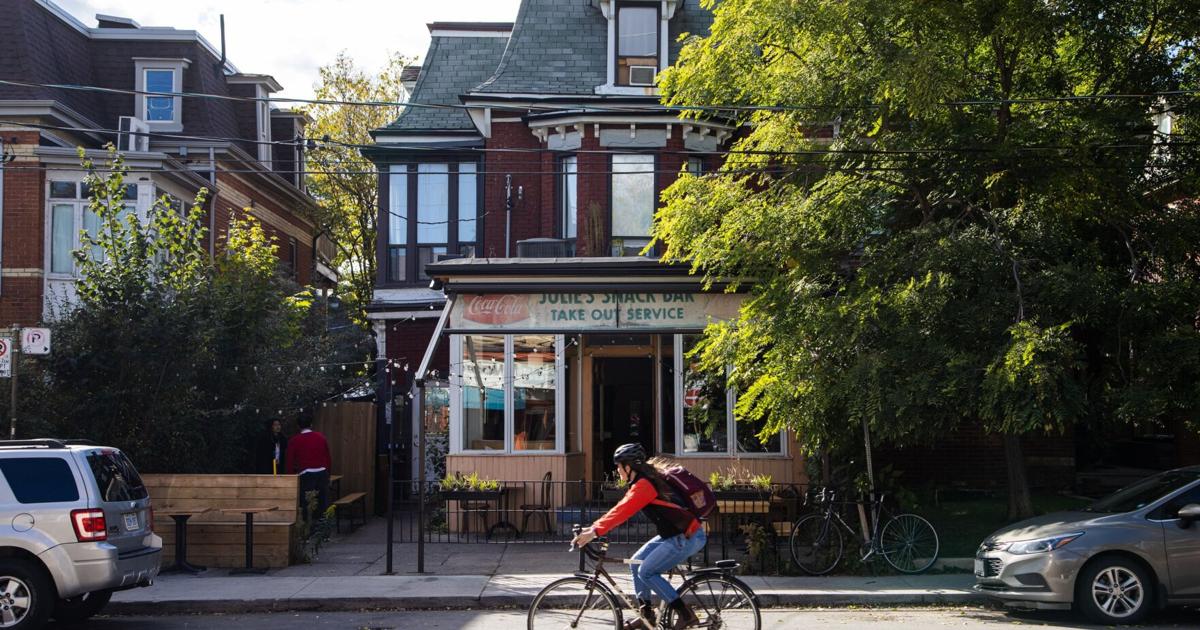A push to legalize cafes, corner stores and home businesses in Toronto’s residential neighbourhoods — which proved unsuccessful last year amid outcry from residents’ associations — has resurfaced, with city staff putting forth a modified plan that includes new limitations on where retail stores would be able to open.
The proposal, set to be considered by city hall’s planning and housing committee this week, comes nearly a year after an initial plan to open up lowrise communities to small retail and service operations was punted back to planners.
While the bones of the proposal remain the same, the report outlines some new restrictions based on 2025 consultations, including more restrictions on locations for retail operations, as well as a ban on postal or courier services and warehouse uses due to concerns about noise, deliveries and loading.
City planners say these changes represent a balanced approach — one that minimizes “potential adverse impacts” while opening the door for the kinds of variety stores and cafes they see as a win for walkable, livable neighbourhoods. But to the Beaconsfield Village Residents Association, which led the charge against the policy last December, the latest revision from staff is still unpalatable.
“Unfortunately, these changes do not address the concerns that councillors had raised when they voted 18-1 to send the proposal back for consultation with the public and residents’ associations,” association member Nicole Tataj said in a statement.
Tataj and her group marshalled about two dozen other residents’ associations to write letters to council last year opposing the proposal. She worried the rule change could invite bars, cannabis shops and vape stores into neighbourhoods. Many association representatives argued they had not been adequately consulted. Staff told the Star at the time they had spoken with several hundred people about the proposal through various channels.
In December, council ordered staff to redouble consultation efforts. The new staff report said their efforts have since included holding public meetings open to any city residents as well as targeted meetings with residents’ associations, business groups and other organizations.
An online survey the city held this year, with about 2,600 respondents, found 72 per cent supported small retail businesses in neighbourhoods. Fifty per cent of them wanted more permissive options than the current proposal, staff say.
Still, Tataj believes many Torontonians remain ignorant to the debate.
“We found that most people still had no idea what it is, and those that had heard about it tended not to have an appreciation for the scope of the proposed changes,” she said.
Beaconsfield and other residents’ associations ran their own survey in September, she said, and found more than 90 per cent of its 3,500 respondents opposed neighbourhood businesses opening up “without the need for any further approval or consultation.” The survey was distributed by residents’ associations and community groups to their members.
While the initial proposal would have allowed retail stores on any corner lot in neighbourhoods, or beside parks, schools or commercial sites, the new framework would limit them to corners on “community streets,” a new street designation that city hall says refers to generally minor arterial roads with sidewalks on both sides, bike infrastructure, public transit and facilities like places of worship.
These streets, planners say, account for less than a quarter of the total length of streets in the interior portions of Toronto’s residential neighbourhood zones — though it varies depending on neighbourhood.
This limits where residents might see patios, as they would only be allowed alongside retail stores, takeout spots or restaurants abutting major streets. Under the proposal, patios couldn’t have music or amplified sound, would need a barrier like a rope or low fence, and must be at least one metre back from the property line.
At the largest, patios could be 10 square metres, or around 108 square feet.
Etobicoke Centre Coun. Stephen Holyday said he remains as opposed to neighbourhood retail as he was back in December, suggesting having businesses in neighbourhoods could worsen worries about home break-ins.
“There’s a heightened acuity about strangers in the area,” he said.
While Toronto Police data shows break-and-enters are down this year compared to last, he said there had been “high profile” news events that had “gotten people talking.”
“It’s about people’s feelings and how they feel about the sense of respite that home can create,” he said.
The staff report acknowledges that discontent persists on either side of the issue, based on feedback during public meetings held since June.
“While some attendees expressed appreciation and support for refinements made to address concerns, some thought there were still risks associated with the changes that had not been adequately addressed, and others thought the changes were too limiting and may affect business viability,” staff wrote.
To Brian Cheung of housing advocacy group More Neighbours Toronto, neighbourhood retail legislation is long overdue. He didn’t think the original proposal would have created the problems residents’ associations feared, and supports the new proposal.
“This exists all around the world,” he said. “You go to Europe, you go to Montreal, there are mixed-uses embedded within the community and it works perfectly well.”
Cheung worries that, if and when the item returns to council, councillors will try to pick it apart and make certain streets in their wards off limits.
The staff report says planners considered creating different rules depending on location, but ultimately decided in favour of consistency.
Local retail is already part of the fabric of Toronto’s neighbourhood zones, but many of the cafes, corner stores, barber shops and other establishments tucked between single-family homes that exist today predate the city’s modern land use rules, which were drawn up in the mid-1900s.
Many sites are operating under “legal nonconforming” status, which allows them to stay open as long as they’re in continuous use.
Planners have pointed to a marked decline of these small local retail and service establishments in recent decades, with 1,406 known establishments in operation in 2019 compared to 2,100 back in 1989.



